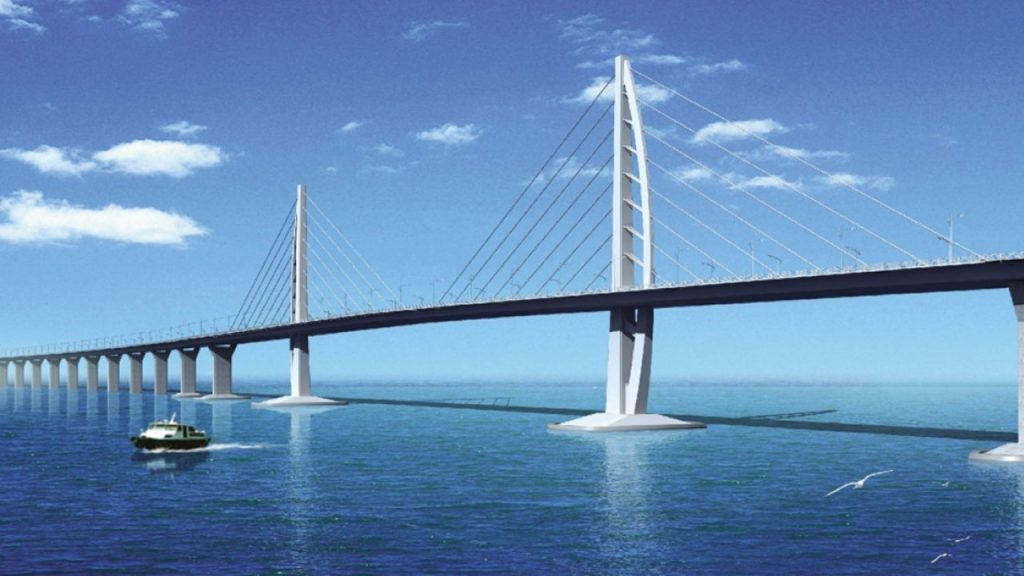In the picturesque archipelago of the Philippines, where vibrant cities coexist with breathtaking natural landscapes, the threat of flooding looms large. With its tropical climate and heavy rainfall, the country is prone to devastating floods that disrupt daily life, damage infrastructure, and endanger lives. In an effort to mitigate these risks, local government authorities have increasingly turned to dredging and desilting as a proactive approach. But does this practice truly prevent flooding? As we explore the impact of desilting in the Philippines, we delve into its efficacy in safeguarding communities from nature’s wrath while considering potential challenges and long-term solutions. We will also explore how pontoons can help equipment stay afloat in rivers and lakes.
Click here to view how pontoons can help dredging and desilting in the Philippines.
Understanding Dredging and Desilting in the Philippines: What They Entail
Dredging and desilting in the Philippines are two essential methods aimed at preventing flooding in key major cities like Makati, Las Pinas, Muntinlupa, Taguig, Quezon City, Bacolod, and Zamboanga. While both processes involve removing sediment from water bodies, they differ in scale and technique. Dredging refers to the excavation of material from the bottom of rivers, lakes, or harbors, usually carried out through mechanical means like suction or scooping. On the other hand, desilting focuses on removing silt and sand that accumulate in canals, ditches, or small waterways using manual labor or machinery.
In recent years, there has been increasing recognition of the importance of these methods in managing flood risks in the Philippines. However, it is crucial to note that dredging and desilting alone cannot completely prevent flooding. These activities should form part of a comprehensive flood management plan that includes measures such as improving drainage systems and implementing sustainable land use practices. Additionally, engaging local communities and raising awareness about proper waste disposal can also significantly contribute to reducing sedimentation levels in water bodies over time.
Moreover, it is worth mentioning that dredging and desilting must be approached with caution to avoid potential negative impacts on ecosystems. Disposing of dredged material properly is key to avoiding contaminating nearby coastal areas or causing harm to aquatic life. Furthermore, maintaining a balance between these interventions while considering environmental factors is crucial for long-term sustainability.
Understanding the intricacies involved in dredging and desilting lays the foundation for effective flood management strategies.
One of the key aspects to consider when implementing dredging and desilting projects is the selection of appropriate methods. Different techniques can be employed depending on the specific characteristics of the water body and its surrounding ecosystem. For instance, mechanical dredging involves using heavy machinery to remove sediments from the bottom of a water body physically. This method is often used in larger bodies of water where sediment accumulation is significant.
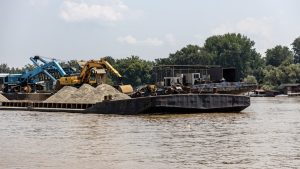
The Importance of Addressing Flooding Issues By City Governments
Flooding is a recurring issue that poses significant threats to the safety and well-being of communities in the Philippines. While dredging and desilting are often hailed as effective solutions, it is crucial for city governments to address the root causes of flooding rather than relying solely on these measures. By taking a proactive approach, cities can mitigate the impact of floods and protect their residents.
City governments in the Philippines must prioritize urban planning and stormwater management to prevent flooding in vulnerable areas. Investing in infrastructure such as proper drainage systems, retention ponds, and green spaces can help absorb excess water during heavy rains. Additionally, implementing strict building codes that prohibit construction in flood-prone zones will ensure sustainable development and minimize potential damages caused by flooding.
Furthermore, city governments should focus on long-term strategies that involve community engagement and education about flood preparedness. This includes holding workshops for residents on how to create emergency plans, providing information about early warning systems, promoting insurance coverage against floods, and encouraging citizens to participate in local disaster management committees. By involving the community in decision-making processes and equipping them with knowledge about flood prevention measures, cities can increase resilience levels when faced with extreme weather events.
In conclusion, while dredging and desilting play a role in preventing flooding in some instances, relying solely on these methods may not be enough. It is essential for city governments to adopt holistic approaches that address the root causes of flooding by investing in infrastructure improvements, implementing strict building codes, and engaging communities in flood prevention initiatives.
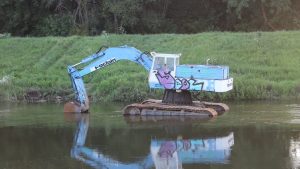
The Current State of Flooding in the Philippines
The Philippines has long been plagued by flooding, with devastating consequences for communities across the country. While efforts to dredge and desilt waterways have been touted as potential solutions, the current state of flooding suggests that these measures may not be sufficient. In recent years, intense rainfall caused by typhoons and monsoons has overwhelmed existing drainage systems and led to widespread inundation.
One crucial factor contributing to the current state of flooding in the Philippines is rapid urbanization. As cities continue to expand, concrete jungles replace natural areas that are used to absorb excess water. This phenomenon creates a hardscape where rainwater rapidly accumulates, overwhelming drainage systems designed for a less densely populated area. Additionally, inadequate infrastructure maintenance exacerbates the problem, as clogged canals and silted rivers are unable to convey water away from vulnerable areas efficiently.
Another challenge lies in the complex system of river networks throughout the archipelago. The Philippine terrain consists of numerous mountains and watersheds that feed into interconnected river basins. When heavy rainfall occurs simultaneously across different regions, rivers swell beyond their capacity, causing massive floods downstream. Dredging alone cannot address this issue; it requires robust flood forecasting systems and improved coordination between provinces to ensure proper early warning mechanisms are in place.

What is Dredging? Step-By-Step of Dredging in the Philippines
Dredging is a crucial process in maintaining the waterways and preventing flooding in the Philippines. Step-by-step, this task involves removing sediments, debris, and other materials from rivers, lakes, or harbors to improve depth and flow capacity. The first step is surveying the area to identify the specific parts that need dredging. This includes measuring the volume of sediment accumulation and determining its composition.
Once the survey is completed, the next step is mobilization. Dredging equipment like excavators, suction dredgers, or cutter suction dredgers is transported to the site where they will be functionalized. The actual dredging process begins with the excavation or suction of sediments out of water bodies using specialized machinery. These machines scoop up sediment from underwater areas or suck it up through a large hose connected to a suction pump on board.
Afterward, desilting takes place as part of the dredging process, which involves separating water and sediments through different methods, such as settling tanks or centrifugal separators. The separated sediment can be further processed for reuse or disposed of properly while clean water returns back to rivers naturally.
Dredging plays a vital role in safeguarding communities from devastating floods by increasing river discharge capacity and preventing sediment buildup that could impede natural flow patterns during heavy rainfall events.

What is Desilting? Step-By-Step Desilting Process in the Philippines
Desilting is a vital process for preventing flooding in the Philippines. It involves the removal of accumulated sediment, also known as silt, from water bodies such as rivers, canals, and reservoirs. This silt buildup is a common occurrence due to erosion and natural sedimentation processes.
The first step in desilting is surveying the area to determine the extent of the silt accumulation. This helps experts identify problem areas and prioritize which locations require immediate attention. Once this assessment is complete, equipment such as excavators or dredgers is used to remove the silt from the water body physically.
During desilting operations, careful consideration must be given to where the extracted silt will be disposed of – it must not cause further environmental harm. In some cases, the removed silt can even be repurposed for agricultural use or as construction materials.
Desilting presents an effective solution for flood prevention if carried out systematically and comprehensively. By removing excess sediment from water bodies regularly before heavy rain events occur, it minimizes the risk of blockages that could lead to overflowing and flooding downstream communities. Additionally, desilting enhances overall water flow capacity and improves fisheries since it clears up space for aquatic life to thrive.
Understanding how desilting works is crucial for preventing flooding in various parts of the Philippines. It involves assessing affected areas accurately and using specialized equipment to remove accumulated sediment efficiently.

Differences Between Dredging and Desilting in the Philippines
Dredging and desilting are two common methods used in the Philippines to manage water bodies and prevent flooding. While both processes aim to remove sediment buildup, there are distinct differences between the two approaches.
Dredging involves the excavation of sediments, mud, and debris from rivers, lakes, or harbors using heavy machinery such as excavators or dredgers. It is a more intensive process that aims to deepen waterways and increase their capacity. This method is especially useful for improving navigation channels or creating new ports, but it can also disrupt aquatic ecosystems by uprooting plants and disturbing habitats.
On the other hand, desilting focuses on removing only accumulated silt or fine particles from water bodies while leaving the natural bottom layers undisturbed. Instead of heavy machinery, desilting often utilizes techniques such as suction pumps or sluicing to extract sediment without causing significant disturbance. This approach allows for sediment removal while minimizing environmental impact and preserving aquatic biodiversity.
Understanding these distinctions is crucial when assessing flood prevention strategies in the Philippines. While dredging projects may provide immediate relief by deepening waterways and increasing their discharge capacity, they can have long-term repercussions on local ecosystems if not carefully managed. In contrast, desilting offers a more targeted solution that minimizes disruption to natural environments while still effectively addressing sediment buildup.
By considering these differences between dredging and desilting in flood prevention efforts, policymakers can make more informed decisions about which method best suits a particular area’s needs.
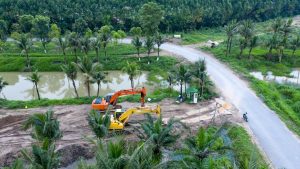
The Role of Dredging and Desilting in the Philippines During Flood Prevention
Dredging and desilting in the Philippines play a crucial role in preventing floods in key major cities such as Manila, Cebu, Cavite, Paranaque, Navotas, Marikina, and Davao. With its extensive network of rivers and canals, the country is prone to severe flooding during typhoon season. Dredgers are used to deepen waterways, increasing their capacity to accommodate excess water and reducing the risk of overflow. By removing accumulated sediment and debris, these machines ensure that water flows smoothly, minimizing the chances of obstruction and subsequent flooding.
However, it is important to note that dredging alone may not be enough to prevent all types of floods. While it significantly improves the carrying capacity of water bodies, it does not address issues such as poor drainage systems or inadequate infrastructure. To achieve effective flood prevention, a holistic approach is necessary – one that combines dredging with other measures like constructing flood barriers, improving urban planning strategies and implementing stringent waste management practices that reduce pollution levels in rivers.
In conclusion, while dredging and desilting are vital components in flood prevention efforts in the Philippines, they should be viewed as part of a greater solution rather than standalone measures. The government needs to invest not only in acquiring efficient dredgers but also in sustainable urban development initiatives that prioritize effective drainage systems and comprehensive flood control plans. Only through an integrated approach will the country be able to face its annual battle against flooding successfully.
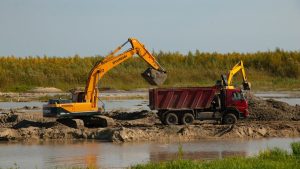
Challenges and Limitations of Dredging and Desilting in the Philippines
Dredging and desilting have long been hailed as solutions to prevent flooding in the Philippines. However, it is important to recognize the challenges and limitations that come with these techniques. One of the main challenges is the sheer scale of the problem. The country has a vast network of rivers, canals, and drainage systems that require constant maintenance and cleaning. The cost associated with dredging and desilting operations can be exorbitant, especially for smaller local government units that lack sufficient funds.
Another limitation is the environmental impact of these activities. Dredging can cause significant disturbances to aquatic ecosystems, stirring up sediment and releasing pollutants into the waterways. It also disrupts habitats for various species, threatening their survival in already fragile environments. Moreover, removing silt from rivers may temporarily improve water flow but does not address other underlying issues, such as improper land use planning or deforestation that contribute to flooding.
One innovative approach being explored is natural flood management techniques which focus on restoring natural systems rather than artificially altering them through dredging or desilting. Protecting and restoring wetlands, reforesting river banks, and implementing sustainable land-use practices are some strategies being considered to reduce flood risks while also promoting biodiversity conservation.
While dredging and desilting play a role in managing floods in the Philippines, their efficacy should not be overestimated, nor should they be seen as a standalone solution.
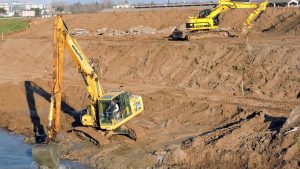
Case Studies: Successes of Dredging and Desilting in the Philippines
Case studies from various regions in the Philippines reveal the significant successes of dredging and desilting projects in preventing flooding. In the province of Pampanga, for example, the Pampanga River is often prone to severe flooding during heavy rainfall. However, a large-scale dredging project that was completed in 2018 has shown remarkable results in flood mitigation. The increased flow capacity of the river and improved water conveyance has significantly reduced flood damage to surrounding communities.
Another compelling case study comes from Metro Manila, which faces constant threats of urban flooding due to rapid urbanization and inadequate drainage systems. In 2019, extensive desilting and canal cleaning efforts were undertaken along critical waterways within the city. As a result, subsequent typhoons that hit Metro Manila showed significantly diminished flood impacts compared to previous years. This success can be attributed to the increased efficiency of discharge channels due to proper maintenance and regular desilting operations.
Through these case studies, it becomes evident that dredging and desilting play a crucial role in preventing floods across different regions in the Philippines. By enhancing waterway capacities and maintaining efficient drainage systems, these measures successfully reduce flood risks for vulnerable communities.

Dredging and Desilting Using Pontoons and Heavy Equipment
Dredging and desilting, when done using pontoons and heavy equipment, play a crucial role in preventing flooding in the Philippines. Pontoons are floating platforms that provide stability and convenience during dredging operations. Their ability to move through shallow waters allows engineers to access areas that would otherwise be unreachable by traditional land-based equipment.
The use of heavy equipment further enhances the efficiency of dredging and desilting processes. Excavators equipped with large buckets can remove significant amounts of silt from riverbeds and waterways, improving their capacity to handle heavy rainfall or typhoon-induced runoff. These machines also allow for precise control over the depth and width of channels, ensuring proper water flow management.
Beyond flood prevention, utilizing pontoons and heavy equipment for dredging offers additional benefits. It aids in maintaining navigation channels while reducing sediment build-up that hampers shipping lanes. Additionally, it can improve water quality by removing contaminated sediments, thereby preserving ecosystems that rely on clean waterways.
Overall, combining pontoons with heavy equipment is not only an effective approach to prevent flooding but also contributes to various other environmental benefits. With continued investment in these technologies, the Philippines can mitigate flood risks while safeguarding its aquatic resources for future generations.
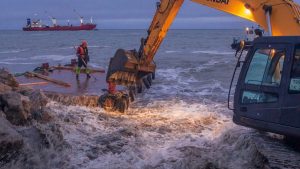
The Role of Pontoons in Dredging and Desilting Operations in the Philippines
Pontoons play a crucial role in dredging and desilting operations in the Philippines, as they provide a stable platform for extracting sediment from water bodies. Dredging is essential to maintain navigable channels and prevent flooding by increasing the capacity of rivers and canals to carry excess water during heavy rainfall or typhoons. Pontoons are equipped with heavy-duty machinery, such as excavators or suction dredgers, which are capable of removing large amounts of silt and debris from rivers, lakes, or harbors.
One key advantage of pontoons is their mobility, allowing them to access even remote or inaccessible areas that may require urgent desilting. In a country like the Philippines, with numerous water bodies prone to clogging due to sedimentation, pontoons offer an efficient solution by facilitating targeted dredging operations wherever needed most. This helps prevent flooding by ensuring that waterways remain free-flowing and capable of accommodating increased runoff during extreme weather events.
Additionally, pontoons can be customized and fitted with advanced technologies for efficient sediment removal. These include high-pressure hydraulic systems that break up compacted sediments for easier extraction or environmental monitoring equipment to assess sediment quality before disposal. By utilizing modern techniques and innovations in pontoon-based dredgers, the Philippines can achieve more sustainable river management practices while simultaneously preventing flood damage caused by overflowing rivers and inadequate drainage systems.
Pontoons are indispensable assets in dredging and desilting operations in the Philippines.
Are You Looking for Dredging and Desilting Company in the Philippines?
When it comes to preventing flooding in the Philippines, dredging and desilting play a crucial role. And if you are in search of a reliable company for these services, look no further than Amaya Dockyard & Marine Services Inc. (ADMSI). With its expertise in manufacturing pontoons and state-of-the-art equipment, ADMSI has established itself as a leading provider of dredging and desilting solutions in the country.
- Email us: info@amayadockyard.com
- Call our 24-hour hotline: +63 917 633 0479
- Viber: +63 917 633 0479
- WhatsApp: +63 917 633 0479
- Facebook Messenger: Click here
- Click here to inquire
What sets ADMSI apart is its commitment to both quality and cost efficiency. They understand that tackling flooding requires efficient and sustainable solutions, which is why they prioritize environmentally friendly dredging techniques that minimize disruption to aquatic ecosystems. By utilizing advanced equipment such as metal pontoons and hydraulic excavators with clamshell buckets and cutter suction dredgers, they ensure the quick completion of projects without compromising on quality.
Furthermore, ADMSI has an impressive track record when it comes to delivering successful projects. Their team of highly skilled professionals, combined with their modern fleet of vessels, allows them to handle even the most complex dredging operations. Whether it’s clearing riverbeds or removing accumulated sediment from waterways, ADMSI is equipped to address any desilting challenge efficiently.
So, if you are looking for a dredging and desilting company in the Philippines that can effectively contribute to flood prevention efforts while maintaining budget considerations, look no further than Amaya Dockyard & Marine Services Inc.

Final Thoughts: Do Dredging and Desilting in the Philippines Prevent Flooding?
In conclusion, while dredging and desilting can contribute to mitigating flooding in the Philippines, they are not a foolproof solution. These activities have their limitations and must be complemented by comprehensive flood management strategies. It is essential to recognize that flooding in the Philippines is a complex issue that stems from a multitude of factors, such as climate change, urban development, poor infrastructure, and inadequate drainage systems.
Dredging and desilting can provide short-term relief by increasing the capacity of waterways to handle excess water during heavy rainfall. However, without addressing the root causes of flooding, such as deforestation and improper land use planning, temporary measures like dredging can only provide temporary solutions.
Therefore, it is crucial for policymakers to adopt an integrated approach to flood management that encompasses both structural and non-structural measures. This includes investing in green infrastructure projects like reforestation efforts to prevent soil erosion, improving urban planning practices to minimize impervious surfaces and encourage natural drainage systems, enhancing flood forecasting and warning systems for early detection and response, as well as promoting community awareness and resilience-building initiatives. Only by employing a multi-faceted approach can we truly combat the challenges posed by flooding in the Philippines.

